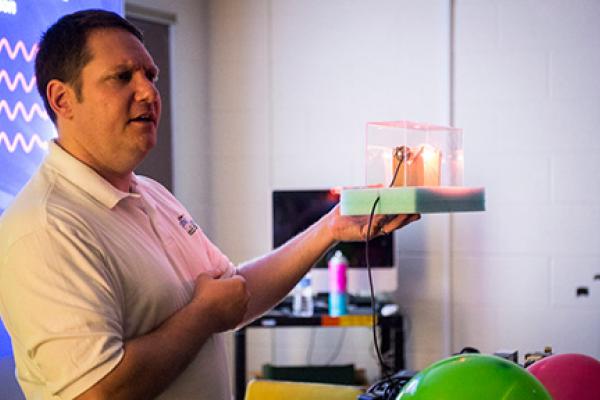
Thu, November 10, 2016
11:30 am - 12:30 pm
Smith Seminar Room, 1080
Please join us for a CME Seminar presented by Associate Professor Eric Stinaff from Ohio University as he shares his research on: Opto-electronic and CVD growth studies of two-dimensional transition metal dichalcogenides.
Abstract
Interest in two-dimensional crystals has grown exponentially over the last decade, a testament to their vast technological and scientific potential. In addition to properties such as high mobilities, semiconducting and superconducting behavior, and excellent thermal properties, many of these materials have the potential for novel opto-electronic applications, with large absorption, strong room-temperature emission, non-linear response, and optical control of spin and valley degrees of freedom. In this presentation, we will discuss an experimental investigation of mono-to-few-layer sheets of MoS2 and WS2 employing femtosecond transient absorption spectroscopy (FTAS) and microscopy. Samples were pumped resonantly at different absorption peak positions and then probed with a white-light continuum over the spectral range of 350 nm - 800 nm. For MoS2 we observe previously reported features related to ground state bleaching along with higher energy features that can be related to states identified as the C and D excitons, which have been reported to arise from band nesting. The results on these dynamics may prove useful to a greater understanding of the electronic structure of this material.
We will also discuss a novel chemical vapor deposition (CVD) process we have developed. A substantial bottleneck in the field is the ability to controllably, and scalably, process material into working devices. Seminal results in the field of 2D materials-based device fabrication have involved the isolation of monolayers followed by making metal contacts, commonly using e-beam lithography, a difficult and time consuming process with no obvious route to scalability. We have developed a CVD process to selectively grow 2D materials in a deterministic manner around lithographically defined bulk metallic patterns which concurrently provide as-grown electrical contact to the material. Monolayer films, with lateral extent of up to hundreds of microns are controllably grown on and around patterned regions of transition metals. The materials display strong luminescence, monolayer Raman signatures, and relatively large crystal domains. In addition to producing high optical quality monolayer material deterministically and selectively over large regions, the metallic patterns remain conductive providing as-grown metallic contacts to the material, offering a path for simple device fabrication and large scale production.
